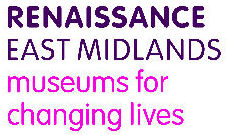
Preservation and Sustainability
The Role of Planning
Digital media is well placed to be reused, and to be available for different applications e.g. as a source of images for marketing, a picture library resource or for an online collections database. There are several aspects to this:
- The formats of documents or data files, by following established standards, remain discoverable and usable
- The media that they reside on is stored safely, is reliable, is refreshed and is backed up securely.
- Systems are designed to remain available, affordable and are supported.
- Web sites are maintained and supported.
Strategies
The following strategies can be used in the preservation of digital assets:
- Refreshing:
- Media may need to be refreshed in line with its recommended life. A checking system may be put in place to identify problems.
- Migration:
- Data may need conversion of data into a more accessible format. This has the potential for the loss of data.
- Emulation:
- Where an emulator mimics the original software environment to allow data to be read.
Standards and File Formats
Using standard formats for data files (whether text, images, audio and video) will not prevent them being superseded but can help in maximising the opportunity for reuse.
Systems
There can be a breakdown of continuity in both hardware and software even if open standards are used. Systems that conform to standards (e.g. Spectrum for a collections management system) may ensure easier migration to a new system.
Media
In the life of the PC there have been rapid changes in removable data, from the original 5.25" 'floppy' disk found in the earliest PCs, to the 3.5" disk, CD, DVD and USB memory stick. Fixed or 'hard' disks have grown in size from being measured in megabytes to reaching terabytes.
Issues to consider regarding digital media include:
- Capacity:
- The increasing size of data files has put pressure on backups. Simple local backups may be made using multiple CDs or DVDs but such media is not likely to be reliable in the longer term.
- Reliability:
- Reputable brands of media should be chosen to maximise reliability. Different brands may be selected for different sets to protect from faulty batches. Media should be kept in a stable environment, away from dust and dirt and magnetic interference.
- Identification:
- Safe labelling is important to identify the purpose of the backups and the relationship to any digitisation programmes. This should take into account use beyond the immediate life of the project and the original personnel involved.
- Archive Copies:
- Should be handled as little as possible. Working copies should be used for regular access, such as for copying and publication.
- Remote Backups:
- To ensure safe-keeping, a remote backup outside of the building and immediate area is necessary. This may provide an opportunity to store the media in a specialist, supervised store.
Web Sites
Consideration needs to be taken of preservation and sustainability issues concerning Web sites. The design of the Web site should take into account how digital content may be used in other applications, rather than being focussed solely on one output.
There is a clear advantage in storing and managing digital assets within a collections management system which has the capability of exporting to the Web as data might be more easily migrated to another system.
Acknowledgements
 This document has been produced from information
contained within the Renaissance East Midlands
Simple Guide to Digitisation that was researched and written by
Julian Tomlin and is available from
http://www.renaissanceeastmidlands.org.uk/.
We are grateful for permission to republish this document under a Creative Commons licence.
Anyone wishing to republish this document should include acknowledgements to
Renaissance East Midlands and Julian Tomlin.
This document has been produced from information
contained within the Renaissance East Midlands
Simple Guide to Digitisation that was researched and written by
Julian Tomlin and is available from
http://www.renaissanceeastmidlands.org.uk/.
We are grateful for permission to republish this document under a Creative Commons licence.
Anyone wishing to republish this document should include acknowledgements to
Renaissance East Midlands and Julian Tomlin.
